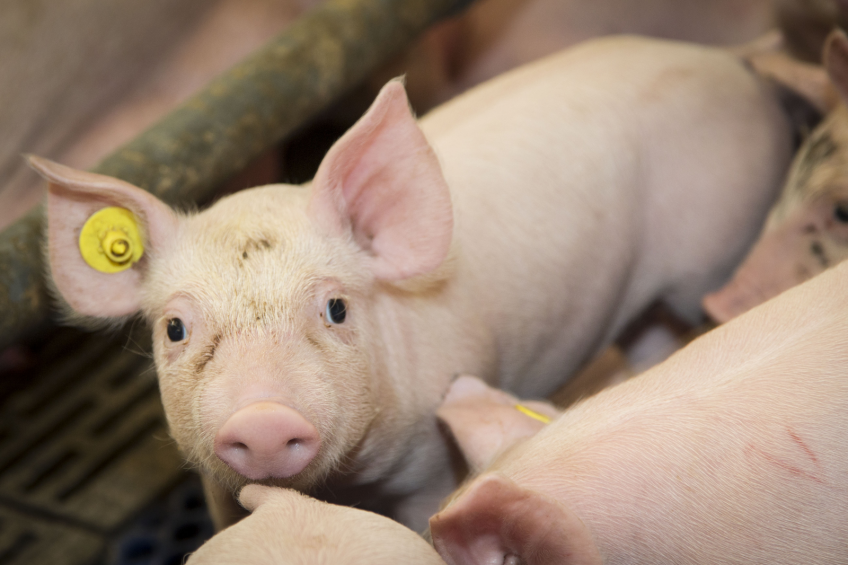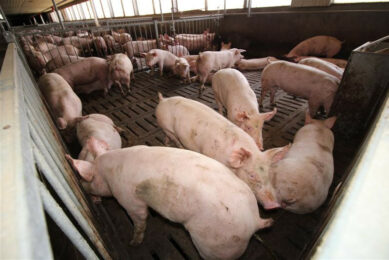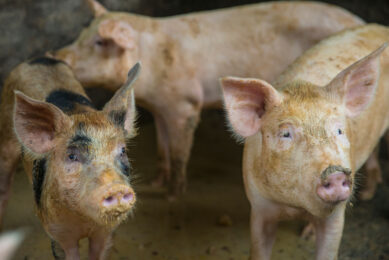Genotyping rotavirus strains in Argentina

As pig movements grow in Argentina, researchers have updated their knowledge on the genotyping of diarrhoea-causing rotavirus strains in the country. Genotype G5P[7] was found to be present in the greater proportion in Argentina.
The researchers, connected to the National Institute of Agricultural Technology (INTA) in Buenos Aires, Argentina as well as to the company Vetanco, write in their overview that neonatal diarrhoea is endemic and a major health problem of pig farms in Argentina, resulting in direct and indirect economic losses. Viruses can be a key factor here, either as primary causing factor for enteritis or as predisposing factor for secondary infections by other infectious agents like bacteria and parasites.
Rotavirus and its transmission
Rotavirus is responsible for cases of diarrhoea in many animal species. This virus has been detected in all swine producing countries. Transfer of the disease is direct through the faecal-oral route and indirect through feed, water, vehicles or mechanical vectors. Generally, the virus solely affects piglets younger than 40 days and if they contract diarrhoea, it usually takes 1 to 2 days.
The researchers report that, since the movement of animals has been growing rapidly recently, it is important to know the epidemiology of neonatal diarrhoea, as Argentina does not vaccinate the pigs against rotavirus. The goal therefore was to characterise the strains of rotavirus which circulate at Argentinian pig farms in 2013 and if possible, to discover relationships between strains found in other regions.
You may also find interesting:
Successfully combating multi-resistant bacteria in pigs
A farmer has successfully eliminated multi-resistant bacteria from his pig stable as part of a study of the University of Bonn.
Faecal samples from pigs with and without diarrhoea
In total, 106 faecal samples were collected from pigs with and without diarrhoea. They came from 7 establishments and were taken between August and December 2013. They were analysed by ELISA for the detection of rotavirus.
79% of farms positive for rotavirus
In total, 79% of farms were found to be positive for rotavirus. The researchers said that the rotavirus with the genotype G5P[7] was found in most farms, although other strains existed that could not be genotyped yet. Other unknown infectious agents were also found in the analysed samples, which could be relevant to the pathology under study.
The researchers wrote that the genotype G3P is rare and has been reported in pigs in Asia, Italy and more recently in Brazil. Phylogenetic analysis of the P[13] strain reveals that this strain was found to be strongly related to strains in Canada, Brazil and Australia (genetic distances of 15.7%, 14% and 12.1%, respectively).
You may also find interesting:
Are we being hoodwinked again?
Danmap, 2015 has just been published and have also found that ‘consumption of meat may currently be considered an insignificant source for the human infections’ of E. coli carrying Extended Spectrum Beta Lactamase (ESBL) or cephalosporin-resistance genes.
Origin and spread of new genotypes
The origin and spread of new viral genotypes of rotavirus in pigs could be associated to the movement of animals within the region. In total, 80% of farms surveyed have virus circulation in piglets of different ages. While the combination G5P[7] was found in greater proportion in Argentina, more research is needed to figure out its role in neonatal pig diarrhoea in the country. This was the first report of the circulation of the new rotavirus genotype G3P[13] in Argentina. Knowing the epidemiology of the circulating strains to quickly implement strategies allows for appropriate and rationally designed control.
The results were presented at the XII National Congress on Pork Production, held August 12-15, 2014. The research was carried out by Celina Vega, Alejandra Badaracco and Marina Bok of the National Institute of Agricultural Technology (INTA) in Buenos Aires, Argentina; in combination with Ma. Fernanda Jabif; Nicolás Fermentini, Andrés Wigdorovitz and Viviana Parreño from Vetanco, Argentina.











